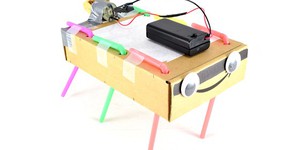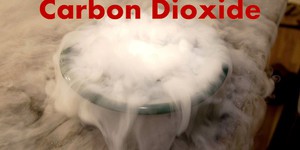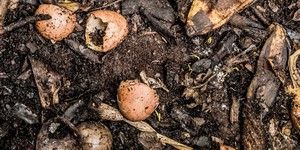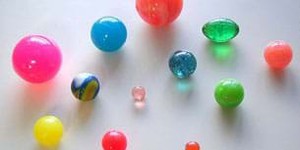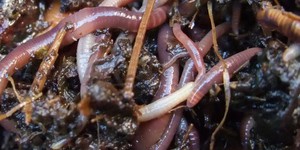Elementary School Lesson Plans (103 results)
Science Buddies' elementary school science projects are the perfect way for elementary school students to have fun exploring science, technology, engineering, and math (STEM). Our elementary school projects are written and tested by scientists and are specifically created for use by students in the elementary school grades. Students can choose to follow the science experiment as written or put their own spin on the project.
For a personalized list of science projects, elementary schoolers can use the Science Buddies Topic Selection Wizard. The wizard asks students to respond to a series of simple statements and then uses their answers to recommend age-appropriate projects that fit their interests.
|
Select a resource
Sort by
|
Lesson Plan
Grade: 1st
1 review
Human vision is dependent on light. We can only see if the light-sensitive cells on our retina at the back of our eyes get triggered by light entering the eye. As a result, we can only see objects that either are illuminated and reflect light back into our eyes, or objects that emit light. Any object that is in complete darkness is not visible to the human eye. In this lesson plan, students will place different objects inside a box and view them under different light conditions. By doing so,…
Read more
NGSS Performance Expectations:
Featured
Lesson Plan
Grade: 6th-8th
7 reviews
Junkbots are easy-to-build robots that you can make using a simple circuit and some recyclable materials. In this lesson, your students will learn about engineering design as they compete to build the fastest robot. No previous robotics experience is required!
Read more
NGSS Performance Expectations:
Lesson Plan
Grade: 5th-12th
2 reviews
Where does CO₂ come from and how does excess carbon dioxide in the atmosphere affect the ocean and aquatic life? In this lesson students are introduced to the carbon cycle and explore pH and acidification with hands-on experiments. They then connect their experimental data with real-world data to evaluate claims about carbon dioxide and ocean acidification. Finally, students are introduced to how different companies and research groups are using green chemistry to build carbon capture…
Read more
Lesson Plan
Grade: Kindergarten-5th
Students learn the difference between global, prevailing, and local winds. They make wind vanes out of paper, straws, and soda bottles and use them to measure wind direction over time. They analyze their data to draw conclusions about the local prevailing winds.Engineering Connection
Understanding the patterns and behavior of global and localized winds enables engineers to design technologies that protect us from wind and exploit the energy of wind. Engineers design…
Read more
NGSS Performance Expectations:
Lesson Plan
Grade: 5th-8th
1 review
What helps SCUBA divers, sharks, fish, and other marine organisms stay in the water column? In this hands-on investigation, students will explore the concepts of buoyancy and mass to create a device to help an action figure stay neutrally buoyant, just like a scuba diver.
Read more
NGSS Performance Expectations:
Lesson Plan
Grade: 3rd-7th
2 reviews
In this two-part inquiry-based activity, students will practice using the scientific method while learning about decomposition, exploring how some types of garbage will decompose while others will not. Students can then go on to design their own experiment to test different variables affecting the rate of decomposition.
Read more
NGSS Performance Expectations:
Lesson Plan
Grade: 4th-8th
Students design a device that can track a specific amount of time and indicate when that time has passed with a sound or visual signal. They iterate their designs and prototypes to improve repeatability.
Learning Objectives
Students will:
Design and build a device that indicates when a specific amount of time has passed.
Use simple machines in their device.
Identify the ways in which energy is stored and transferred in their device.
Iterate and improve their designs based…
Read more
Lesson Plan
Grade: Kindergarten-5th
Students determine the coefficient of restitution (or the elasticity) for super balls. Working in pairs, they drop balls from a meter height and determine how high they bounce. They measure, record and repeat the process to gather data to calculate average bounce heights and coefficients of elasticity. Then they extrapolate to determine the height the ball would bounce if dropped from much higher heights.Engineering Connection
Mechanical engineers select materials that…
Read more
NGSS Performance Expectations:
Lesson Plan
Grade: 3rd-8th
Constellations have been used for centuries for navigation and time keeping. In this interactive lesson, students will learn the difference between their sun sign and their birthday stars.
Read more
Lesson Plan
Grade: 3rd-5th
Let's construct a home for macroinvertebrates! Third graders observe the manor discovering which organisms can survive well and how they change when their environment changes. Fifth graders develop a model to describe the manor and the movement of matter among the plants, animals, decomposers and the environment. This project is designed to span a month or longer.
Read more
Lesson Plan
Grade: 4th-8th
By building your own seismograph to document shaking, you and your children will learn about the cause of earthquakes and how scientists measure earthquake intensity.
Read more
|
Explore Our Science Videos
Make an LED Night-Light
Why Soda Fizzes – Boyle’s Law Demonstration
How to Build a Toy Car - Science Project




